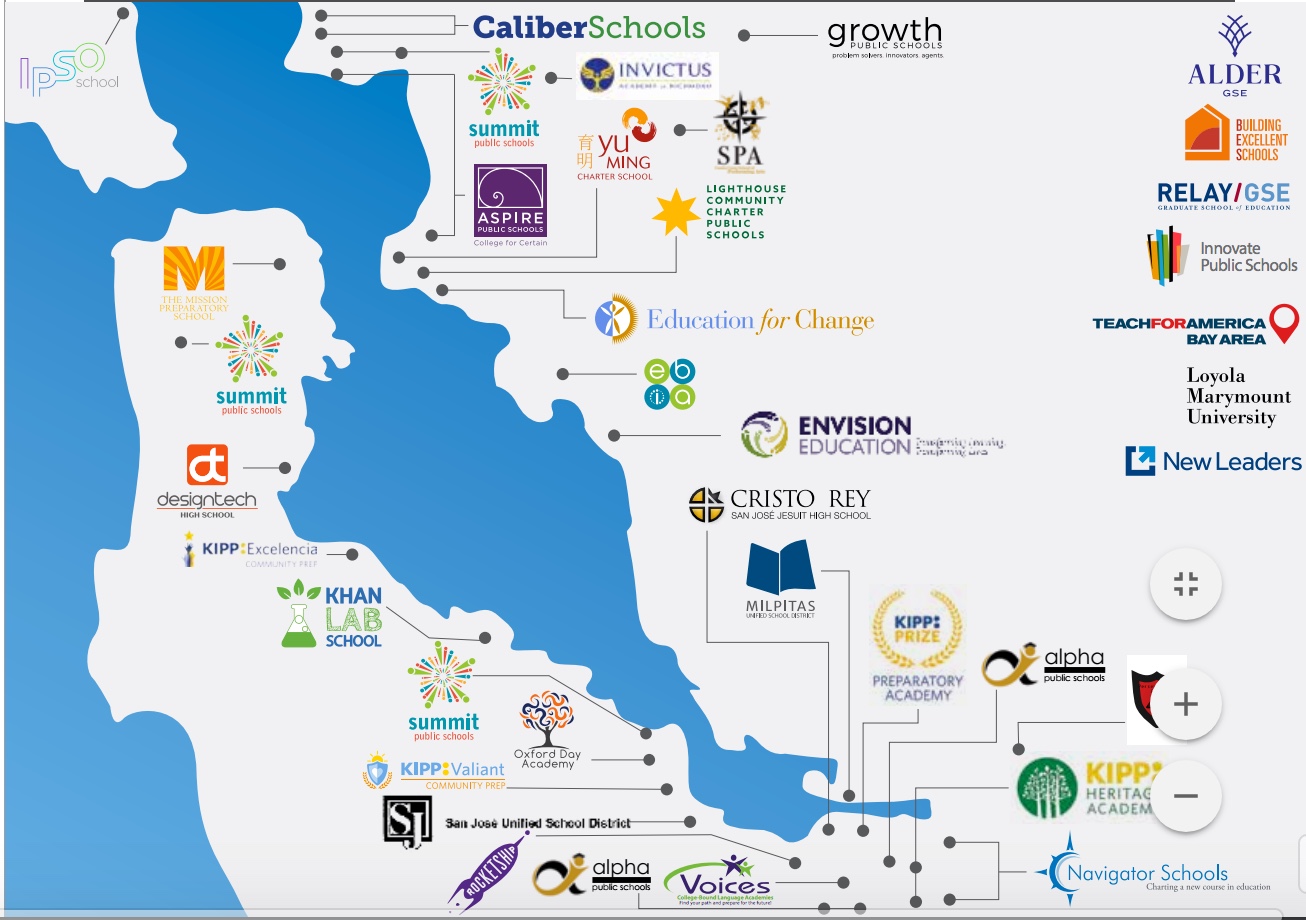“We do not believe that there is yet definitive proof that personalized learning works better than other models.”
— All That We’ve Learned: Five Years of Working on Personalized Learning
Five years and more than $50 million dollars. The Silicon Schools Fund got started in 2012 by Brian Greenberg, a former high school principal and John Fisher, heir to the Gap fortune, with the idea of finding ways to scale promising charter schools.
Now Greenberg and his team, including Caitrin Wright and Rob Schwartz, have published a five-year reflection on what they’ve learned. The bad news: They are unapologetic about saying that there isn’t yet enough evidence. The good news: There are positive signs, both when measuring students across standardized tests and when looking for signals of engagement. Greenberg and Wright spoke with EdSurge about the report.
Five years ago, Greenberg and his team were excited about what high-performing charter schools were doing with students. But it was a huge amount of work for the teachers. “We thought that what we were doing was amazing and we were really proving that you could get every kid into college and have kids succeed. But boy, was it taking every drop of energy we had,” Greenberg says.
Listen to the conversation here on the EdSurge Extra Podcast:
Doing something different would take money and time. So Greenberg took a very Silicon Valley-esque approach: He raised funds, like venture capitalists, to support starting schools.
They declared they were agnostic about what structure the schools would take. Software wasn’t “the answer,” nor was a particular model such as “station rotation or flipped schools,” says Greenberg. What the team did focus on was finding strong school leaders and teams. “We spend an incredible amount of time, like venture capitalists do, interviewing the founder and knowing the founding teams,” he adds. “We think it’s more important than any other factor in picking great schools.”
“It’s about the strategies that you develop for your community, rather than taking someone’s solution and putting it down in your community which may have different needs and educators with different strengths,” Wright shares.
By the end of the last school year, the Silicon Schools team had invested in 31 schools, 24 of which were brand new. Those schools serve almost 7,000 students currently and, as they add additional grades, will have as many as 10,000 students. Six additional schools opened this autumn.

Two-thirds to three-quarters of those students are eligible for free and reduced lunch, says Wright. Although the founding team was eager to serve students who came from neighborhoods with weak schools, they purposefully tried to support students from across the socioeconomic spectrum.
Greenberg is no fan of buzzwords or quick fixes. “First the word was blended learning, before it was hybrid, and now it’s personalized learning. The minute it becomes a ‘thing,’ it’s calcified—and you have people who put up their picket signs on one side or the other. It can’t change anymore.”
“We think about beliefs and practices—getting kids more of what they need when they need it,” Greenberg states. They also think deeply about supporting the teachers: How should they spend their time? What can technology do for them?
What gives the Silicon Schools team hope is the performance of students in a subset of their schools. At Navigator charter school Hollister Prep, 85 percent of Latino students scored proficient in English Language Arts (ELA) on the state assessment, compared to 37 percent of Latino students in the rest of the district. On the NWEA MAP assessments, students in the bottom quartile at the beginning of the year showed the greatest growth. Silicon Schools students on average scored 15 percentage points above the California state standard for proficiency on the CAASP 2015-2016 exams; the top quartile of California school were only 3 percentage points above that standard.
Many of the schools seem fun, too: Summit Public Schools, which has a project-based learning program, is in the portfolio, as are the Khan Lab School and Design Tech, which is based on the design-thinking approach honed by Stanford University.
Even so, the schools have had stumbles. “A few years ago, as our team was spending more time in personalized learning schools, we were struck by something that made us a bit uncomfortable. The schools were often very quiet,” notes the report. Too quiet. Personalized learning shouldn’t be an isolated experience, declares Wright. These days, educators aim to limit screen time to 20 to 40 percent of the day.
But even with rules of thumb, Wright and Greenberg emphasized that each community has to figure out what type of school will best serve its students. “It would be ironic if ‘personalized learning’ was a monolithic solution,” Wright says.
“I’m really worried about people who try to scale this too quickly,” Greenberg adds. Aspiring school founders may visit a school and get excited about the prospect of trying to replicate what they see. “We say, hold on a second. The jury is still out. We have to get more data…. We do not want school boards across the country adopting resolutions saying ‘Every school in our district will be personalized by the year 2021.’”
Instead, personalized learning should be about empowering educators with more freedom to choose how they teach and ask questions such as: What do the students who walk in the door already know? “That’s going to require schools that are restructured a bit differently and use technology a little more differently,” he adds.
Poorly executed “personalized learning” will have poor outcomes. But when teachers and students buy into a new approach, Greenberg believes great progress is possible.
“I think in 20 years we’ll look back and it will be kind of obvious that the old model of just grouping kids by age and having everything done manually, teacher to kid, wasn’t the most effective form of education,” Greenberg muses. “But we’re not yet certain of the exact prescription of what will replace it.”


